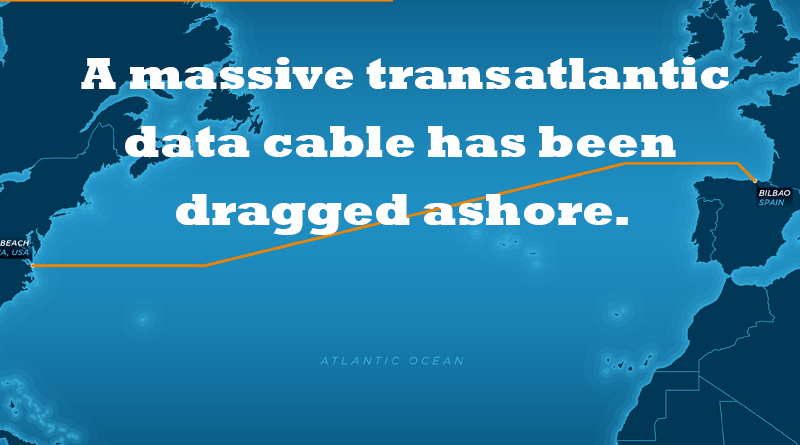A new undersea network connection connecting the United States, the United Kingdom, and Spain has been built by Google. The tech behemoth claims that it is putting new technology into the cable, claiming that it is a considerable upgrade over older lines. By 2022, the project should be completed. According to Google, underwater data cables transport nearly all of the world’s data. More than a year after the megacorp announced ambitions to connect the UK and US, Google’s newest transatlantic undersea cable has finally been carried ashore.
The Grace Hopper cable, named after the computer science pioneer, has arrived in Bude, on Cornwall’s picturesque northern coast. It is a 16-fibre pair (32 fibres) Google-funded cable.
When fully installed, the cable is estimated to have a capacity of around 340Tbps, which is roughly equivalent to 17.5 million individuals simultaneously streaming 4K videos.
The cables are normally established by communications firms – usually a group of them pooling resources – and then charged to other businesses for their use.
The new cable, dubbed “Grace Hopper” after an American computer scientist and naval rear admiral, will arrive in the United Kingdom near Bude, Cornwall. It’s Google’s fourth undersea cable that it owns privately.
The Grace Hopper cable, which runs from New York to Bude in the United Kingdom and Bilbao in Spain, is seen on this map.
However, according to telecoms expert IDC’s John Delaney, Google requires “an ever-increasing amount of transatlantic bandwidth.”
“Building its cables assists them in selecting the most optimal cable routes” near data centres, he said. “It also reduces operational costs by eliminating the need to pay telcos and other third-party cable owners for the usage of their infrastructure,” says the company.
Jayne Stowell, who oversees the building of Google’s undersea cable projects, the company needs a reliable internet connection.
“Having a single cable isn’t enough since any element in the network can fail at any time, and fixing it when it’s 8,000 metres beneath the water takes a long time,” she stated.
The cable arrived late yesterday afternoon at Crooklets Beach, just a short coastal donkey ride from GCHQ’s Bude listening facility on the cliffs overlooking the sea.
The expenditure, according to those behind the initiative, was required due to expanded network infrastructure capacity and to run Google’s ever-growing services. Grace Hopper will connect the United Kingdom in order to address the rapidly increasing demand for high-bandwidth connections and services.”
Grace Hopper joins other Google-owned cables such as Curie, which connects the US to Panama and Chile; Equiano, which connects Portugal, Nigeria, and South Africa; Dunant, which connects the US to France; and Havfrue, which connects the US to Denmark.
The Grace Hopper cable was divided mid-ocean, with one half redirected to Bilbao, Spain, where it arrived earlier this month, and the other to Bude, piqued cable enthusiasts’ curiosity. The Iberian connection will be part of a deal reached last year by Google Cloud and Telefónica, the parent company of O2 UK, to extend services in southern Europe. Google wants to open a cloud region in Spain as part of the deal, as well as collaborate on 5G services utilising Google Cloud’s Mobile Edge Computing platform.



